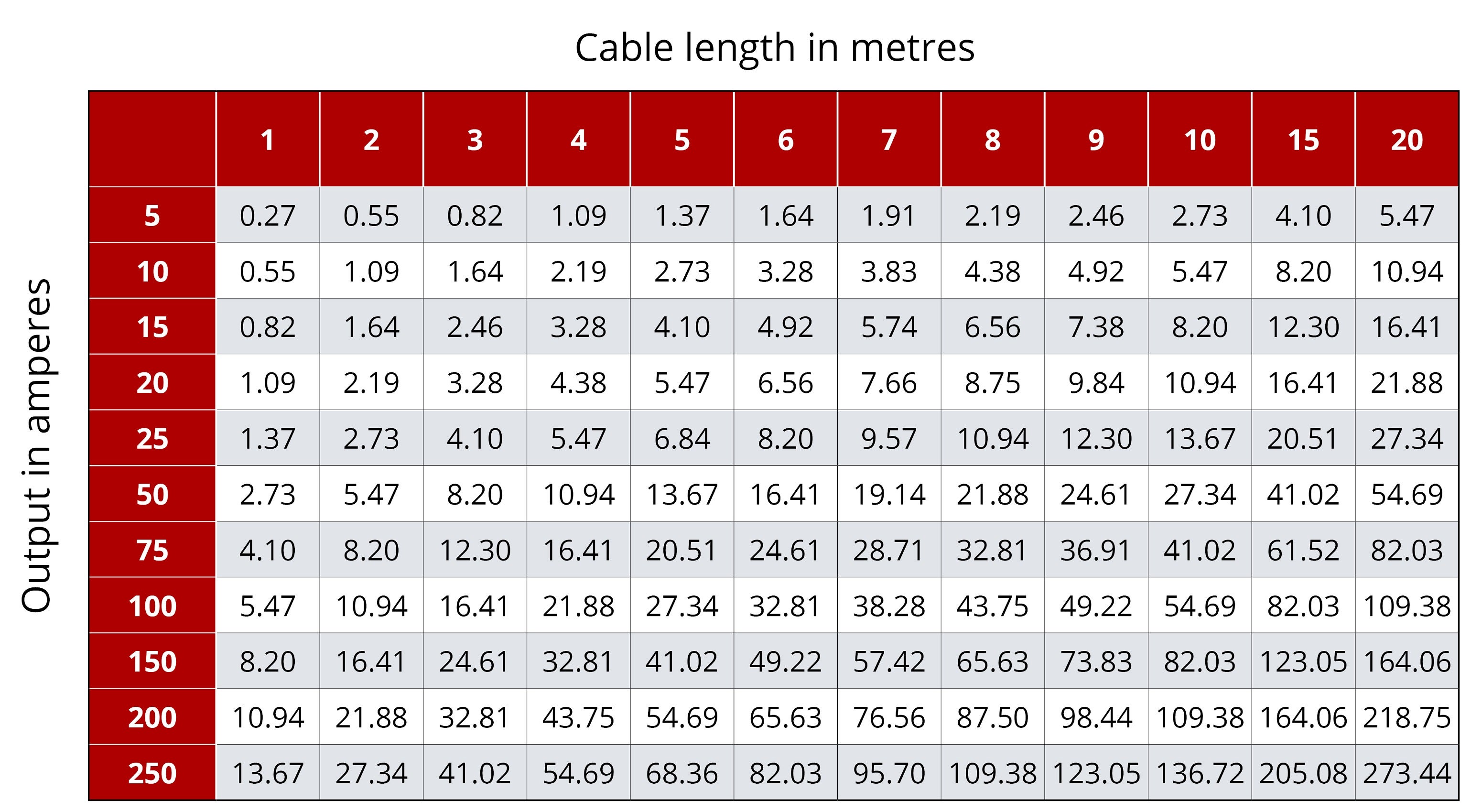A correct distribution of power is very important and what plays a major role is the thickness of the cables through which the power is conducted. By using the right cable, unpleasant situations can be avoided. Read more about how to find the right cable for your 12V installation in this article.
It is good to know that large tractors and machines also use large power units. In order to transport the high power properly and thus also the high current, it is very important that the cables used are not too small.
How do I calculate which cable I need?
A good power distribution is very important. With the help of the tables below, you can calculate which cable you need for your vehicle. With the first table and formula you calculate the cable thickness and with the second table and formula you can calculate how much current can eventually pass through.
Cable thickness
The table below is an example of how the required size, or cable thickness, of a cable can be determined, depending on the required amount of current or power.
| Value | Units | |
| Voltage | 12.8 | V |
| Length of the cable | 8 | Meter |
| Required Ampere | 10.00 | A |
| Acceptable voltage loss | 5 | % |
| Required cable size | 4.38 | mm2 |
The formula used to calculate the required Ampere (mm2) is as follows:
=+(2*(meter*A*0.0175))/((V/100)*%)
To make it a bit more easy, we have already done some calculations for you and you will find these in the table below (value in mm2):
 * This table is based on pure copper and a voltage of 12.8 Volts
* This table is based on pure copper and a voltage of 12.8 VoltsQuantity of power
The table below shows you an example of how to calculate the amount of current that can pass through a cable.
| Value | Units | |
| Available size | 0.25 | mm2 |
| Voltage | 12.8 | V |
| Length of the cable | 1 | Meter |
| Acceptable voltage loss | 5 | % |
| Maximum possible power | 4.57 | A |
The formula used above to calculate the amount of current (Ampere) is as follows:
=+((V/100)*%)*mm2/(2*0.0175*meter)
To make it a bit more easy, we have already done some calculations for you and you can find them in the table below (in Amps):
 * This table is based on pure copper and a voltage of 12.8 Volts
* This table is based on pure copper and a voltage of 12.8 VoltsAfter choosing the right cable, it is very important to use the following colours from the start:
- Coloured wiring, such as red cables, for the plus (+);
- Black wires for the ground.
A few more tips before you get started
After you have found the right cable, you can get started. But there are still a few things to keep in mind. We have listed some of them for you below.
1. Before you start, always turn off the powerThis is important for your own safety and always applies when working with electricity, but certainly also for a 12V/24V system.
2. Always ensure that the wiring is neatly arranged
If you ever have a faulty appliance and it is the wiring, it is nice to be able to find the cables immediately and solve the problem instead of having to search for hours in the chaos of wires.
3. Use an earth switch
On a tractor, an earth switch is usually installed under the steps. It is installed on the negative lead to the battery and is best placed between the battery terminal and the earth strip, so that it can be switched off at night and no current can flow through it.
- It reduces the risk of self-ignition;
- It could prevent a flat battery. Sometimes a light or an electronic component is still switched on and then it uses power all night long, which means that after a while there is a chance that the battery will run out of power.
Do you have any questions?
Do you still have questions about how to find the right cable? Please contact a Kramp product specialist or contact us at knowledgecenter@kramp.com.

